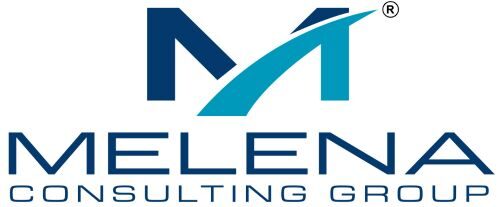“Fewer than three in 10 (30%) of employees in the U.S., U.K., Spain, France, and Germany strongly agree that their performance is managed in a way that motivates them to do outstanding work.”~ Gallup1
Source: Gallup – https://www.gallup.com/workplace/245786/gallup-reports-share-leaders-2019.aspx
In my 20-year leadership career, I have seen hundreds of managers and supervisors struggle in holding their employees accountable.
This has been true for numerous people in supervisory roles and with various levels of authority and experience, from newly minted, first-time supervisors to seasoned managers responsible for entire workforces.
What has stood out to me is the lack of balance in their performance management approach.
Managers and supervisors who have struggled to hold their employees accountable and improve performance the right way have either been too harsh, too lenient, or too disengaged.
These three extreme and unbalanced approaches are ineffective and negatively impact the workplace.
The Four Leadership Styles of Supportive Accountability™
The Supportive Accountability Leadership Model™ frames performance management using four basic leadership styles determined by how much leaders strike a delicate balance between support and accountability.
Leaders can operate anywhere in the continuum between high and low for both supportiveness and accountability, and the amount of support and accountability required will vary from situation to situation.
These are the four leadership styles:
1. Unsupportive Accountability
Unsupportive Accountability is characterized by high levels of accountability and low levels of supportiveness. Leaders with this style demand high performance but don’t provide the necessary tools, equipment, and emotional support employees need to achieve it. This type of accountability can create a harsh, intimidating, and uncaring environment for employees. Leaders who use an unsupportive accountability style pile on the work with minimal support and create a demanding work environment. They’re often successful in pressuring employees to deliver high performance, but at extraordinary costs to employees and the organization.
2. Supportive Unaccountability
Supportive Unaccountability is demonstrated by high levels of supportiveness and low levels of accountability. Leaders who operate with a high degree of supportive unaccountability tend to worry too much about being liked and making employees happy. They have difficulty holding themselves and their employees accountable for meeting organizational goals and priorities. They create a fun environment but struggle to help employees meet expectations. Supportive unaccountability can create a “feel-good” atmosphere on the surface, but it doesn’t promote employee engagement and workplace fairness. While some employees are self-motivated and will achieve excellence with or without adequate accountability, there are others who need the oversight to meet performance standards. When a leader fails to promote accountability, it results in an environment where not everyone carries their weight, which sinks the morale of high-performing employees.
3. Total Avoidance
Total Avoidance is the absence of both supportiveness and accountability. This is a hands-off approach, where leaders relinquish their responsibility to lead, guide, inspire, and hold themselves and their employees accountable for meeting goals. Leaders who display total avoidance don’t address concerns, which causes them to snowball into bigger issues that require a higher degree of intervention down the line. Leaders who approach performance management with total avoidance don’t actually “manage” performance. Instead of getting ahead of problems, they operate in a reactive mode and only spring into action when fires erupt. You can spot these leaders frequently expending their energies handling unnecessary “emergencies.” The total avoidance approach creates a chaotic work environment and causes unnecessary workplace stress for the leaders and the people they lead. When leaders who operate with total avoidance oversee an entire workforce, it creates significant organizational dysfunction.
4. Supportive Accountability
Supportive Accountability is the most effective performance management style. It embodies a high level of supportiveness complemented by a high level of accountability. There’s no magic formula for how much support and accountability are needed. Effective leaders provide the right amount of support and accountability based on each situation. When performance isn’t quite up to par, they don’t look for a person to blame, but rather seek to uncover the underlying causes and to provide the support necessary for success. They ask themselves how they can improve the way they lead, provide support, and promote accountability. Leaders who manage with supportive accountability know that great performance flows out of a strong supervisor-employee relationship based on mutual trust, caring, and respect.
Which of these four styles describes the leaders you lead?
When I give talks or train on Supportive Accountability Leadership, it never fails. Participating leaders confirm they have experienced a lack of performance management balance from their direct supervisors at some point in their careers.
Whether their bosses were too harsh, too lenient, or disengaged, it created a demotivating work environment.
Supportive Accountability Is a Choice
The Four Leadership Styles of Supportive Accountability are not about the personality. They’re about the approach.
You may have a direct, take-charge personality and yet choose to provide support and accountability with grace, humility, respect, and sincere regard for the feelings and well-being of others.
Likewise, you may be a soft-spoken, gentle person and still demonstrate a respectful firmness when holding yourself and employees accountable.
Whatever your personality, you can intentionally choose your leadership style. This is one of the most important choices you will make as a leader, and it will have a profound impact on the success and well-being of the people you lead. It will also influence your ability to recruit and retain top talent, which will affect your overall performance and that of your organization.
The intent of the four leadership styles isn’t to label you or the leaders on your team, but rather to provide a framework to help you discover your performance management culture. This discovery is merely a starting point on your journey towards supportive accountability and performance management excellence.
Supportive Accountability Leadership can be learned. However, before the learning process can begin, leaders must understand where they are today and decide where they want to be tomorrow.
Partial Excerpts from:
Melena, Sylvia. Supportive Accountability How to Inspire People and Improve Performance. La Mesa, CA: Melena Consulting Group, 2018pp. 7 – 10. Partial excerpt reprinted with permission.
Why Supportive Leadership Matters
Supportive Leadership Improves PerformanceLeaders who effectively identify and meet the support needs of employees are…












